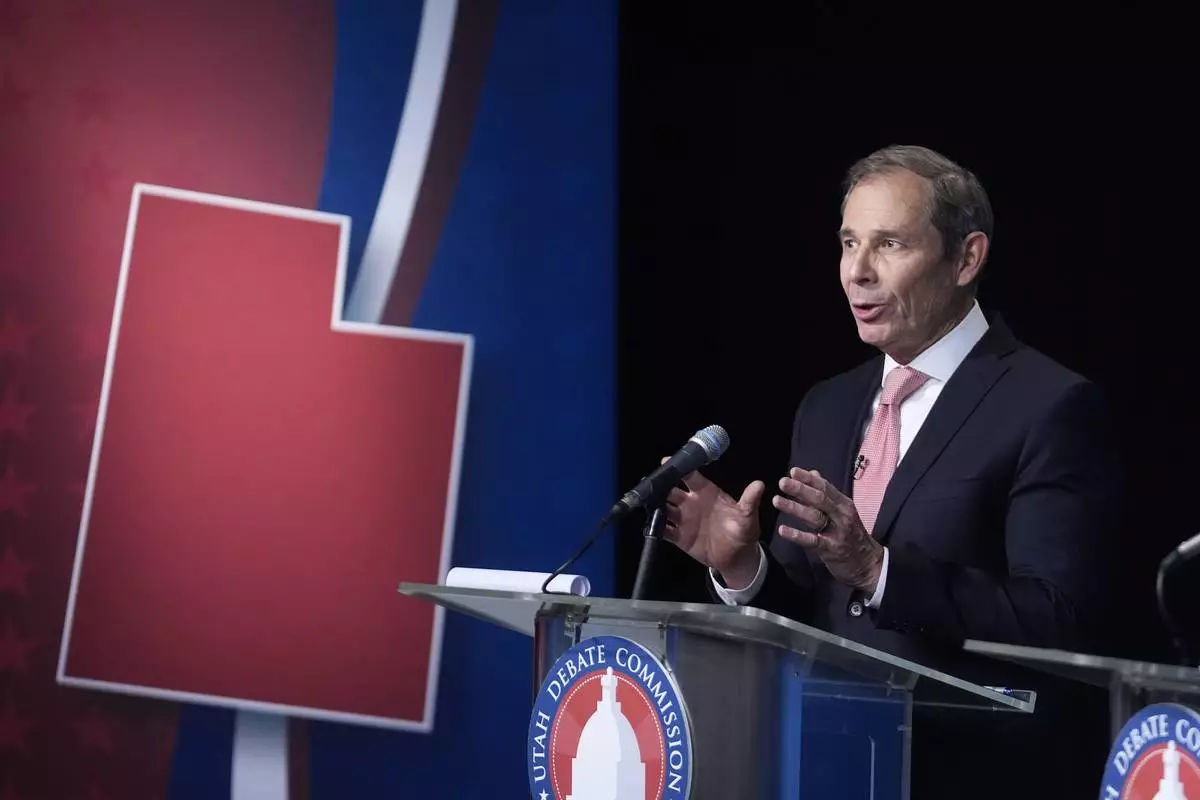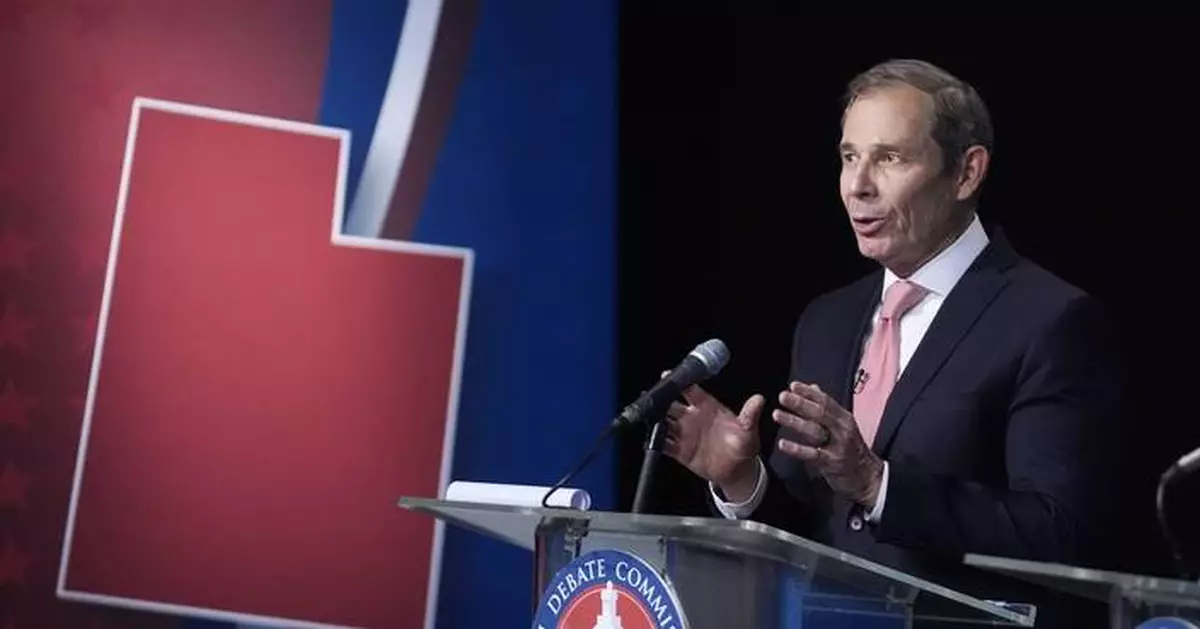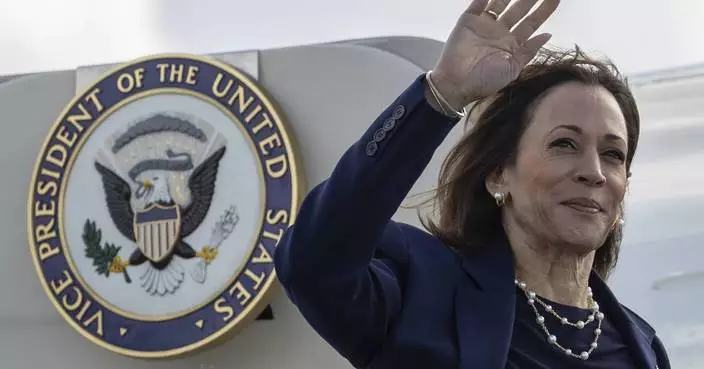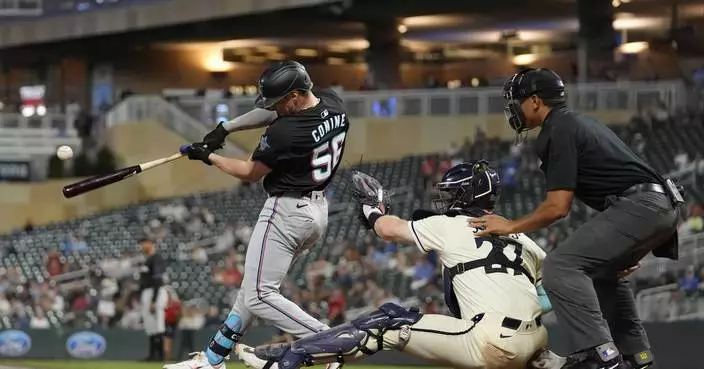OGDEN, Utah (AP) — The Republican and Democratic candidates vying for Mitt Romney’s open U.S. Senate seat sought to convince Utah voters on Thursday that they have the better blueprint to tackle climate change and protect the state's vast natural resources.
Republican U.S. Rep. John Curtis, who leads the Conservative Climate Caucus on Capitol Hill, squared off on the debate stage against a climate activist and mountaineer who aimed to undercut Curtis' credentials as a climate-focused congressman.
“I've heard from young people who have debilitating anxiety about the future of our planet," said Democrat Caroline Gleich. "I'm an environmental advocate, so I'm all about reduce, reuse and recycle, but we cannot keep recycling the same old politicians and expect them to get out of this mess.”
Gleich, 38, is the underdog in a deeply red state that has not elected a Democrat to the Senate since 1970. Utah voters typically favor moderate Republicans, like Romney and Curtis, in statewide elections.
The winner in November will succeed one of Washington’s most prominent centrists and an outspoken critic of former President Donald Trump. Romney reiterated this week that he will not vote for Trump, but he declined to join a growing group of high-profile Republicans including former U.S. Rep. Liz Cheney and a Trump White House aide who have publicly endorsed Democratic Vice President Kamala Harris.
The outgoing senator said he wants to continue to have a voice in a Republican Party that he thinks might need to be rebuilt after this election cycle.
Curtis, 64, has been compared to Romney for his willingness to push back against Trump and others in his party who have falsely claimed that climate change is a hoax.
In the June GOP primary, Curtis emerged from a crowded pool of candidates to defeat a Trump-backed mayor. Before Trump became the Republican nominee, Curtis pledged to support the party's eventual pick, but he has offered no real endorsement of the former president.
In a Western state where residents value outdoor recreation, air quality and water access, both Curtis and Gleich view the environment as a winning issue — but their approaches differ.
Curtis is the longest-serving member of Utah’s House delegation. His seven years on Capitol Hill have been marked by efforts to bring conservatives to the table on what has historically been a Democrat-dominated issue. He has carved out a Republican approach to climate policy that he said aims to lower emissions without compromising American jobs or economic principles.
He explained Thursday how his market-based approach applies to Utah's water issues.
The Great Salt Lake is shrinking, largely due to climate change and water diversion for human use, primarily for agriculture. The exposed lakebed contains toxic minerals that can worsen air quality and threaten public health.
The congressman said he wants to continue to support the state's agriculture industry while helping industry leaders understand how they can make small changes to be part of a bigger solution.
“The combination of the private sector, of not demonizing agriculture, of using Utah's innovation, will help us solve this in a way that will help us grow and prosper,” Curtis said.
His opponent said she would work to speed up water conservation efforts in the West and encourage lawmakers to view the region's water as a finite resource.
Curtis was backed in the primary by some leading environmental interest groups such as EDF Action, the advocacy partner of the Environmental Defense Fund, which has almost always thrown its support behind Democrats.
Gleich has pulled in the League of Conservation Voters Action Fund and Protect Our Winters, an environmental group she used to work with to lobby lawmakers, including Curtis.
Still, the congressman has received broad support from the state’s coal, oil and gas hubs. He has urged lawmakers to not rule out the fossil fuel industry — an economic driver in his congressional district — as part of an affordable clean energy future. He argues that the U.S. can achieve its emission-reduction goals while still using some natural gas, which emits less carbon dioxide than other fossil fuels when combusted.
Gleich has accused Curtis of pandering to the fossil fuel industry and has criticized him for voting against climate-centric proposals posed by Democrats, such as the Inflation Reduction Act. If elected, the Democrat said she would support phasing out federal subsidies for the fossil fuel industry and would push to invest in electric vehicle infrastructure.

FILE - U.S. Rep. John Curtis speaks during the Utah Senate primary debate for Republican contenders battling to win the seat of retiring U.S. Sen. Mitt Romney, June 10, 2024, in Salt Lake City. (AP Photo/Rick Bowmer, Pool, File)












